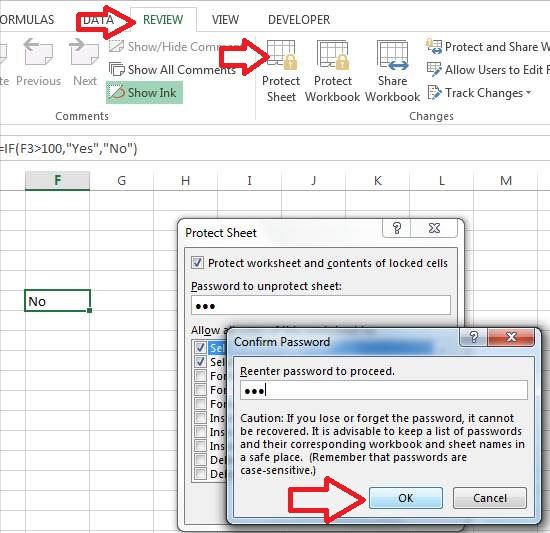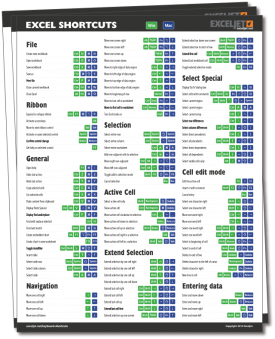5 Ways to Hide Excel Formulas Without Protecting Sheet

In this article, we will explore five effective techniques to hide Excel formulas without the need for sheet protection. This approach can be particularly useful when you want to keep your workbook accessible for collaborative editing but still need to ensure that certain formulas remain confidential. Let's delve into the methods that can help secure your Excel data without locking down your entire spreadsheet.
Method 1: Using the Format Cells Option

One of the simplest ways to hide formulas in Excel is by adjusting cell formatting:
- Select the cell or range containing the formula you wish to hide.
- Right-click and choose Format Cells, or use the shortcut Ctrl+1.
- In the Protection tab, uncheck the box labeled "Hidden".
- Make sure to apply changes without actually protecting the sheet.
Important: This method only works if formulas are hidden when the sheet is protected. However, if you do not protect the sheet, formulas will remain visible to users.
🌟 Note: Excel does not differentiate between cells with hidden and unhidden formulas when the sheet isn't protected, meaning this method is not fully effective without sheet protection.
Method 2: Utilizing Very Hidden Sheets

If your formulas involve extensive calculations that you don't want to be easily accessible, consider using the 'Very Hidden' property:
- Create a new sheet for your formulas.
- Go to the Visual Basic Editor (VBE) by pressing Alt + F11.
- In the VBE, right-click on the desired worksheet in the Project Explorer.
- Choose Properties and then set Visible to 2 - xlSheetVeryHidden.
The 'Very Hidden' setting makes the sheet invisible in the standard user interface, providing an extra layer of protection for your formulas. Here's how this looks in code:
| ```vb Sheets("Sheet1").Visible = xlVeryHidden ``` |

Method 3: Using Named Ranges for Formulas

Named ranges can be used not just for values but also for formulas, enhancing data integrity and security:
- Define a named range for your formula, ensuring its name doesn't hint at the formula's purpose.
- Reference this named range in your formulas where necessary.
Here is how you would set this up:
| ```excel Name Manager -> New... Name: MySecretFormula Refers to: =Sheet1!$A$1 + Sheet1!$B$1 ``` |
Named ranges obscure the actual formula while allowing you to use the results in other cells or functions. This can significantly enhance the security of your Excel sheets.
Method 4: Excel 4.0 Macros (XLM)

Excel 4.0 Macros can hide formulas by executing them in a hidden macro environment:
- Create an Excel 4.0 Macro command in a cell, like:
| ```excel =RETURN(SUM(A1:A10)) ``` |
Excel 4.0 Macros are less common, making the formula less likely to be recognized and altered by other users.
Method 5: Combining Methods

For the utmost security, combine several of the above methods:
- Use named ranges for key formulas.
- Place these named ranges in a very hidden sheet.
- Set up the protection without making the entire sheet protected.
- Implement Excel 4.0 Macros where feasible.
By layering these methods, you create multiple barriers that make unauthorized access to your formulas more difficult:
| ```vb Sub SecureSheet() Sheets("Formulas").Visible = xlVeryHidden 'Apply protection to certain cells End Sub ``` |
Using a combination of these techniques ensures that even if one layer is compromised, others remain intact, enhancing the security of your Excel data.
In wrapping up, these five methods offer various levels of protection for Excel formulas without relying solely on sheet protection. Whether it's using cell formatting, very hidden sheets, named ranges, Excel 4.0 Macros, or a combination thereof, you can effectively safeguard your confidential calculations while still allowing collaborative work within your spreadsheets. Remember, while these methods provide a good level of security, they aren't foolproof, especially against users with advanced Excel knowledge. Always consider the level of access users require and balance security with usability.
What does “very hidden” mean in Excel?

+
‘Very Hidden’ in Excel means that a worksheet is invisible and cannot be made visible through the standard Excel interface. It can only be accessed through VBA programming or the Excel object model, making it an excellent way to hide sensitive data or formulas.
Can Excel 4.0 Macros be executed by users?

+
Yes, Excel 4.0 Macros can be executed by users, but they are less common and require a bit more Excel knowledge to understand and modify, providing a layer of security through obscurity.
Is it possible to fully hide formulas without any risk?

+
No security measure is entirely foolproof, especially in Excel where there are many ways to access data if one knows what they’re doing. However, using multiple methods together can significantly reduce the risk of unauthorized access to your formulas.



